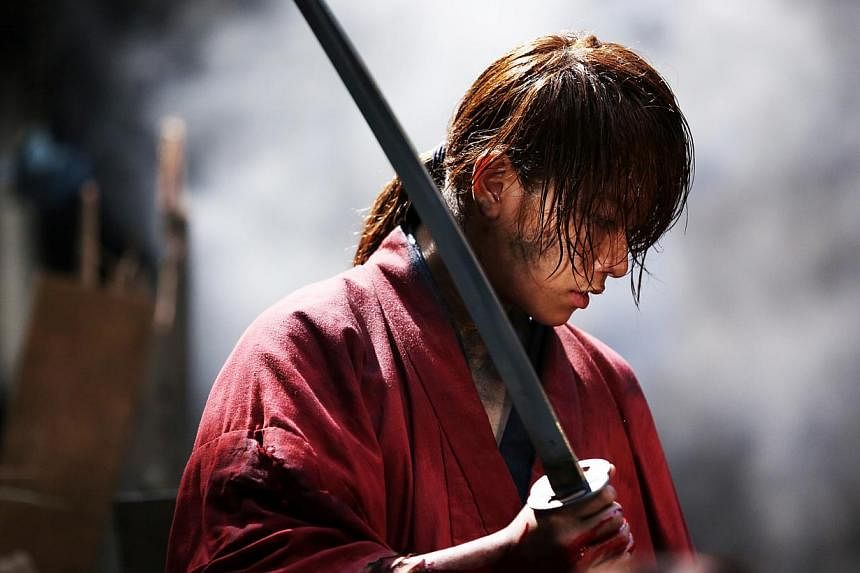Review: Period action
RUROUNI KENSHIN: THE LEGEND ENDS (NC16)
135 minutes/Opens today/*** 1/2
The story: This is the concluding chapter to Rurouni Kenshin (2012) and Rurouni Kenshin: Kyoto Inferno (2014), in which assassin-turned-wanderer Himura Kenshin (Takeru Satoh) has vowed never to kill again. His resolve is sorely tested when he has to stop the vicious Makoto Shishio (Tatsuya Fujiwara) from bringing down the nascent Meiji government and dragging the country into chaos. Kyoto Inferno ended with Kenshin and his love interest, dojo owner Kaoru (Emi Takei), thrown into a stormy sea from Shishio's warship. And a final scene of Hiko Seijuro (Masaharu Fukuyama) chancing upon an unconscious Kenshin on the beach. He is revealed to be Kenshin's master in The Legend Ends, which builds up to a final showdown in Tokyo. The films are adapted from Nobuhiro Watsuki's popular manga of the same name.
It has all led to this.
The epic battle between good and evil, Kenshin and Shishio, has been playing out against the backdrop of Japan in transition with supporting characters from the dogged and indestructible Sanosuke (Munetaka Aoki), the steadfast Kaoru and the obsessed Shinomori Aoshi (Yusuke Iseya) to the cool captain Saito Hajime (Yosuke Eguchi), forming a sprawling web of interconnectedness.
And The Legend Ends delivers a stupendous finale as Shishio and his flaming sword take on Kenshin and gang while cannonballs explode around them on the warship.
But it takes a while to get there.
There is an air of inevitability to concluding chapters and, right from the start, the showdown in Tokyo looms large as hero and villain must face off. And so the pacing here feels stretched out as director Keishi Otomo leisurely accounts for what happens to Kenshin and Kaoru before even heading to Tokyo.
Kenshin's pit stop at his master's forest dwelling is necessary for him to learn the Ultimate Technique in order to defeat Shishio. More importantly, he has to find out what he lacks. If not, he will lose his life, warns his master.
Big-budget blockbusters with scenes of carnage and destruction are a dime a dozen and human life is like so much chaff to be disposed off as blood flows easily. Rarely does a mainstream flick meditate on the consequences of violence and the worth of human life.
Yes, the Kenshin flicks do serve up their share of murder and slaughter, but underpinning it is a consistent message about the toll of violence. They are at least more honest than the usual vigilante-on-killing-spree-for-justice scenarios in which violence is hastily justified.
Even more unusual is the stance it takes that a killer's life has worth as well. It is Kenshin who is the hero and saviour, the same Kenshin whose past is steeped in blood. And the films never let us forget that.


